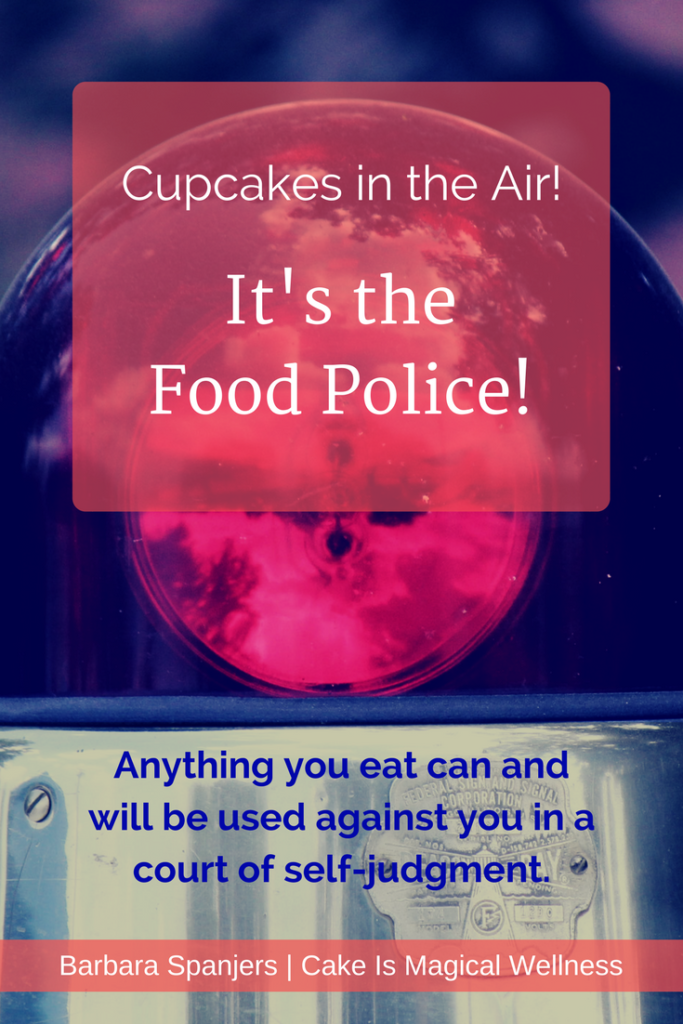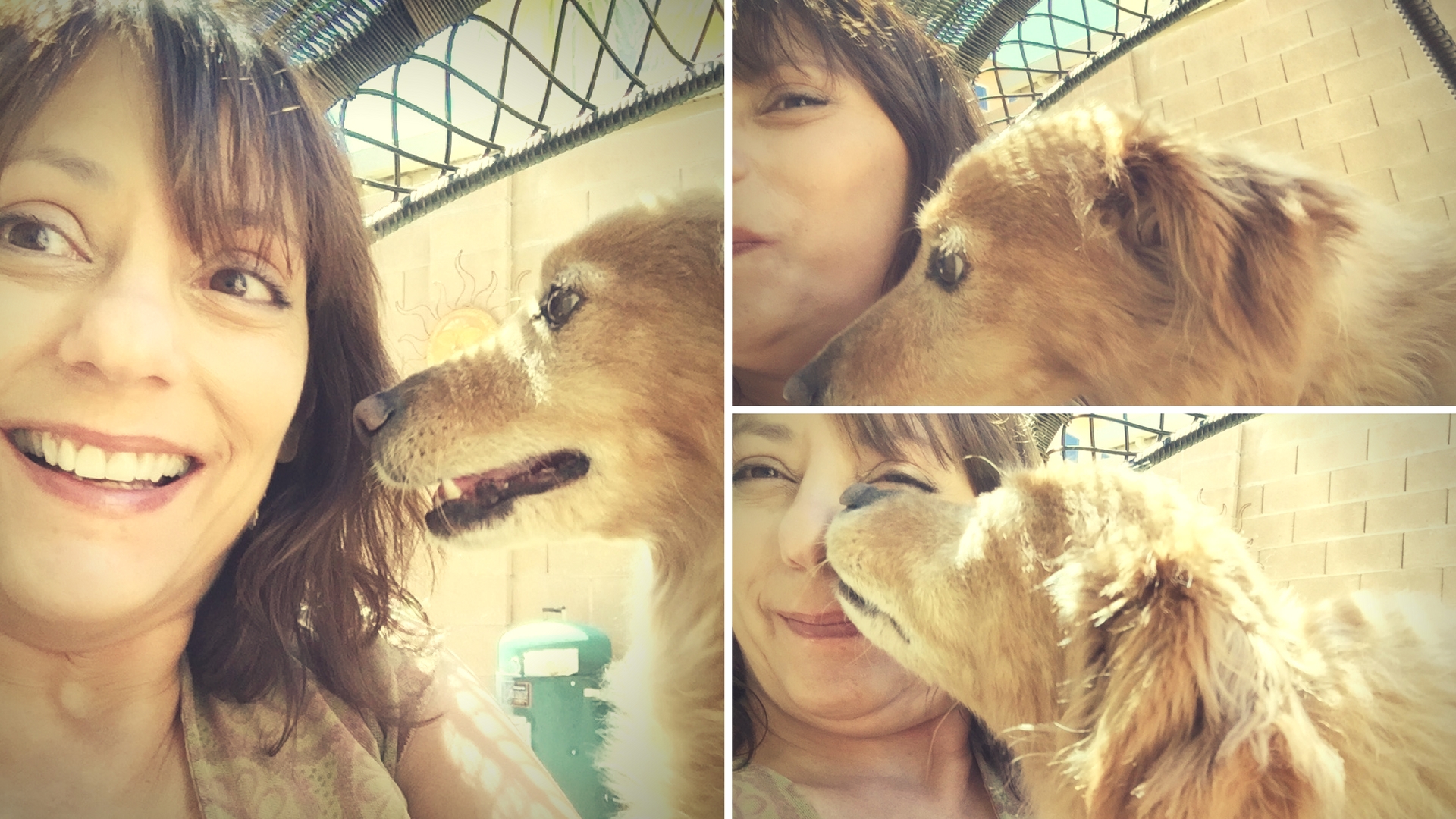Anything you eat can and will be used against you in a court of self-judgment.

Are there any foods you feel guilty about eating? Chips? Ice cream? Bread? If yes, then your inner Food Police are probably running the show.
The idea of “good” and “bad” foods is so ingrained, it’s typically expected from any trainer, nutritionist, or health coach. That’s why I often experience the following type of conversation:
Me: I help people have a healthy relationship with food.
Person: (in a confessional tone) I had a double cheeseburger last night.
Me: I hope you enjoyed it…
The person waits for me to follow up with, “Because it’s the last one you’ll have for a long time, loser! You need to exercise some self-control, you willpower-less maggot!”
Me: It sounds delicious.
Person: (Looks puzzled.)
Me: No, really. I hope you enjoyed it.
When no version of judginess comes their way, it typically causes a little confusion. Aren’t I the Food Police? What the hell kind of a wellness coach am I if I don’t offer to come to your house, toss out all sugar and white flour, and bark at you to buckle down, because there are to be NO EXCUSES?
One who knows that won’t work, that’s who.
For far too many people, vowing to eat clean or swearing off their favorite foods starts with good intentions. However, carrying through, especially in the long term, proves to be daunting. And it’s not for lack of willpower or desire.
The idea that some foods are good and some are bad actually damages your relationship with food.
Placing certain items off-limits creates an atmosphere of restriction. Of lack. It makes those foods more desirable and crave-worthy. So eventually, you are more likely to eat the things you are trying to avoid.
In essence, you create your own trigger foods. Trigger foods? That’s you inner Juvenile Delinquent flipping off your inner Food Police.
When your Food Police are on duty, all-or-nothing thinking is on a ride-along. This leads you to feel like you are pure as the driven snow – until you eat one bite of a peanut butter cup. Then it becomes a feeding frenzy.
What is on your forbidden food list? That depends on several things, including who you spend time with, or which media you are exposed to. When it comes to food, good/bad designations change with the times. (Remember when margarine was supposed to be a healthy alternative to butter?)
[Tweet “Trigger foods? That’s your inner Juvenile Delinquent flipping off your inner Food Police.”]
Here are just a few forbidden foods, depending on where you get your advice:
- Animal products
- Certain kinds of carbs
- All carbs
- Cooked foods
- Certain kinds of fat
- All Fat
- Any food that your caveman ancestors wouldn’t recognize. (Pretty sure our caveman ancestors ate bugs and didn’t have access to cold-pressed olive oil, but never mind the details.)
Some food can simultaneously be on one person’s bad list and another person’s good list. Case in point: coconut oil would be evil incarnate to those following a low-fat diet. However, coconut oil is also very popular right now, with apparently unlimited uses including as hair oil, teeth-cleaner, and even as an enema for cats. (NOTE: I made that last one up. Having the experience of once caring for a cat who had an enema left an enduring mark on my psyche. *Please don’t give your cat a coconut oil enema.*) The recent enthusiastic endorsement for coconut oil is a triumphant turnaround for a food item that was vilified in the mid-1990s for its use in instant-heart-attack movie theater popcorn.
The great irony is this: to eat less of certain “naughty” foods, you don’t need to lock them up. Instead, stop labeling some foods as being better than others. All food has nutritive value, even my grandma’s beloved spritz cookies.
When you stop believing that you can’t be trusted around food, the power of your trigger foods decreases. You may find that the food you went to great lengths to avoid doesn’t even taste that great. Who knew?
Conversely, you may find that the food you went to great lengths to avoid is utterly delicious. And when you are able to eat it out in the open (as opposed to sitting on a pile of dirty clothes in your bedroom closet), it is even delicious-er.
When you get in touch with your body’s hunger cues, each bite gives diminishing returns. You might eat less than one serving – even for those favorite trigger foods that used to send you over the edge into the abyss of wrappers and self-hate.
So you can let the Food Police get on to more pressing calls.






